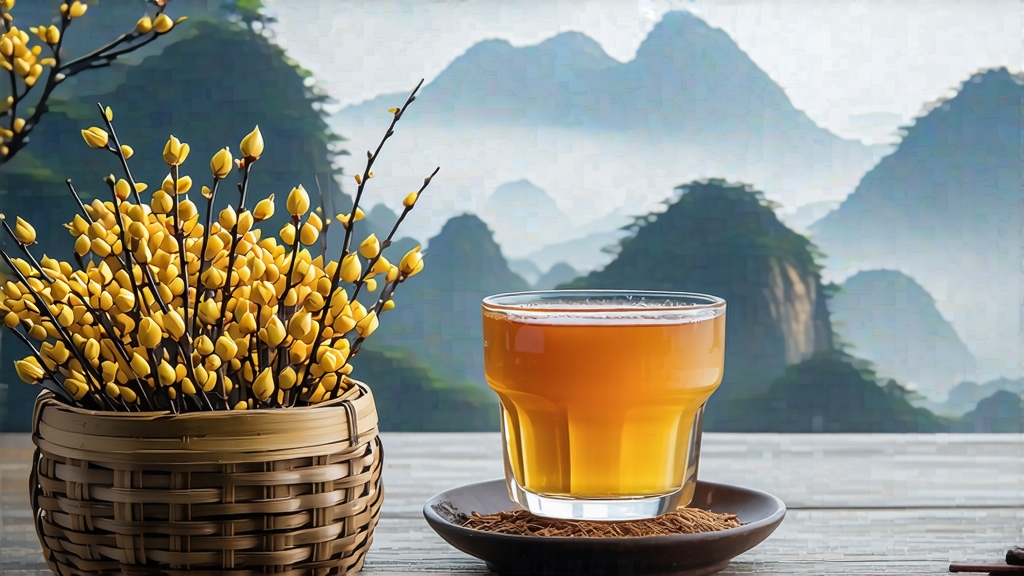
Hidden in the steep, cloud-laced folds of the Dabie Mountains in western Anhui Province, Huoshan Huangya has been quietly perfecting its golden character for more than fourteen centuries. While international drinkers readily name Longjing or Da Hong Pao when asked about Chinese tea, few realize that the same artisans who once supplied the Tang and Ming courts with “immortal yellow sprouts” are still coaxing the same luminous liquor from the same tiny mountain gardens. This essay invites you to meet Huoshan Huangya, the most emblematic—and elusive—style within China’s smallest tea category: yellow tea.
A Brief, Glittering History
The first written record appears in the Tang Dynasty’s Classic of Tea (c. 780 CE), where Lu Yu praises the “yellow buds of Huoshan” for their honeyed fragrance and ability to remain tender after three infusions. By the Song Dynasty the tea had become tribute, carried by horseback and barge to Kaifeng and later Hangzhou. Ming-era gazetteers describe sealed bamboo tubes lined with silkworm silk, each containing exactly 360 buds—one for every day of the lunar year—presented to the emperor at the Winter Solstice. After the fall of the Qing, production all but vanished; only a handful of monks in the Taoist temples of Huoshan kept the craft alive by making tiny lots for medicinal use. When Chinese tea scholars re-discovered those trees in 1972, they found 800-year-old shrubs still producing perfect one-bud-one-leaf shoots. A careful restoration program followed, and today the county’s 2,100 hectares of certified gardens supply fewer than 120 tonnes a year—less than one day’s output of a single large Fujian oolong factory—making authentic Huoshan Huangya one of the rarest commercially available teas on earth.
Micro-Terroir: Why the Buds Turn Gold
Huoshan county straddles 31° N at elevations between 300 and 900 m. The area’s peculiar climate—fog until 10 a.m. almost year-round, humidity above 85 %, and a 15 °C diurnal swing—forces the tea bush to synthesize extra theanine and carotenoids. The local cultivar, Huoshan Da Ye Zhong (Huo-shan Big-Leaf Type), has unusually thick cell walls that can withstand the repeated gentle heating required by yellowing without collapsing into green-tea grassiness or black-tea astringency. The soil is a weathered granite-schist mix, acidic (pH 4.8–5.2) and rich in ion-exchangeable potassium, which translates into a signature “crystal” finish—an almost mineral click at the sides of the tongue that professional cuppers liken to wet slate.
Harvest Calendar: The Art of One Bud
Plucking begins around Qingming (5 April) when the bud reaches 15–20 mm but has not yet unfurled its first leaf. Experienced pickers use a twisting motion rather than a snap, keeping the tender stem intact to preserve the microscopic hairs that store aromatic volatiles. The highest grade, Te Tou (literally “Special Head”), demands 42,000 buds per 500 g of finished tea—roughly four hours of fast picking for a skilled worker. Second grade, Yi Ji, allows one bud plus the nearest half-open leaf; third grade, Er Ji, includes one bud and one full leaf. All picking must finish before Grain Rain (20 April), after which the saponin level rises and the yellowing step becomes uneven.
The Menhuang Process: Where Green Becomes Gold
Yellow tea’s identity rests on a unique micro-fermentation stage called menhuang—often mistranslated as “sealing yellow.” Immediately after a brief kill-green at 160 °C, the leaves are piled in micro-batches of 250 g, wrapped in steamed cotton cloth, and placed inside a bamboo warming box lined with local cedar. The core temperature is allowed to climb to 38 °C over 70 minutes; every 15 minutes the master opens the bundle, fluffs the leaves, and checks for the first appearance of a golden rim along the bud edge. This cycle repeats three times, lowering the moisture from 55 % to 35 % while oxidizing roughly 8 % of the catechins—just enough to mute greenness and develop methylated flavonols that lend a cocoa-butter note. A final low-temperature